Would you like to wear a fitness tracker that can record steps and sleep habits? If these fitness trackers can also integrate information about chronic diseases such as diabetes and high blood pressure, and help improve health, would you be more interested?
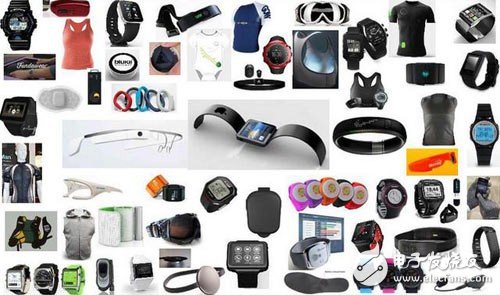
Although the market for wearable medical devices is still in its infancy, the global market for wearable devices will grow from 19.2 million in 2014 to nearly 120 million in 2018, according to International Data Group (IDC). Although the products on the market today only have basic functions, we believe that these wearable devices will be connected to health care and consumer fitness in the future. The most innovative companies have begun to take action, based on big data generated by consumer technology, to develop forward-looking applications for personalized health care services.
Although still in the development stage, investors have begun to pay attention to this area. In 2013, venture capital firms invested $450 million in the wearables sector, an 80% increase from 2012. Investment in this area is expected to continue to grow as new generation devices are added to medical technologies such as blood pressure and blood glucose monitoring. New features are also expected to make wearable devices more focused on the consumer group and may even be included in the health insurance plan.
The above is the long-term vision. In the near term, wearables are just novelty products that have not yet become a necessity, and a number of factors have limited their appeal. On the one hand, the main features of current wearable devices, such as pedometers or calorie consumption calculators, have been integrated into smartphones, so no additional equipment is needed. On the other hand, although current technologies can record data, they cannot use this data to help users improve their health management. As a result, as new users of most health and fitness mobile app (apps) stop using after two weeks, users of wearable devices may eventually put them on the shelf.
To get the attention and purchase of a broader customer base, wearable devices need better design and more powerful features. In the end, different customer groups will have different concerns depending on their needs. Some people may pay more attention to fitness, while others want to lose weight, and some may pay attention to their blood cholesterol levels, stress status or improvement in chronic disease management.
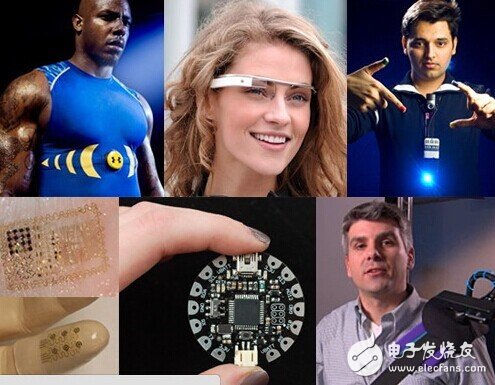
Fast-changing market
At present, the market for wearable devices is highly competitive and highly fragmented, and is mainly aimed at the mass consumer groups. The main product on the market today is a simple wristband that is used to passively monitor user basic activity data. Products from market leaders such as Jawbone, Fitbit, Nike and Basis are able to count, calculate calorie consumption and monitor sleep quality.
However, as technology continues to advance and the boundaries between wearables and smartphones become blurred, the market is changing rapidly. As new businesses flood the market and attract consumer interest, current market leaders are likely to be marginalized or even become laggards.
A large number of new entrants, including giants such as Samsung, LG, and Garmin, have launched new motion trackers that include a range of unique features such as real-time viewing of step counts and calorie-consuming LED touch screens, integrated with smartphones to receive Call and SMS alerts, personal sports goal settings and feedback.
Sony and Apple have also joined the competition. Sony has positioned its SmartBand as a general-life lifestyle device, and the basic motion tracking capabilities are integrated into a larger “life record†framework. Apple officially released the smart watch in April 2015. The Apple Watch is equipped with a heart rate sensor and is connected to the Healthkit. Healthkit is Apple's historical health/fitness database for users, including heart rate, hydration and blood pressure.
The last thing worth mentioning is the Wello smartphone case. Although it is not exactly a motion tracker, it can monitor vital signs such as blood pressure and body temperature through implantable sensors. The data acquisition process is very simple, requiring the user to place a finger on the sensor. Wello is currently applying for FDA approval for this product and will be listed as a medical device.
The next generation of wearable devices will be more advanced in multiple dimensions. Devices with a core user experience will have enhanced monitoring capabilities, such as automatic calorie intake or personalized workouts and dietary recommendations. For example, the AIRO wristband automatically measures the calorie content of the user's diet.
Technological and application advances are also taking place in the medical technology market. Motion trackers in this area will no longer only contribute to basic health management, but will be able to monitor specific data metrics based on the user's personal situation to meet the needs of chronically ill patients like diabetes and high blood pressure. The convergence of consumer health management devices with emerging specific disease management devices is creating important growth opportunities. For example, Google is developing contact lenses that monitor and automatically record patient blood glucose data, and keep the patient and doctor informed of the data.
Unlike the consumer attributes of first-generation wearable devices, the medical attributes of next-generation devices will likely lead to more rigorous FDA inspections of these products, as well as the reliability, safety, and effectiveness of the products. If approved by the FDA, these new devices may be covered by health insurance, turning consumers who are unwilling to spend more than $100 on wearables into customers. Traditional pharmaceutical companies and innovative medical technology companies such as Proteus Digital Health are developing stronger data connectivity and sharing technologies that allow a large number of chronic patient groups and stakeholders (eg healthcare workers, insurance companies, etc.) Better manage chronic diseases. Other companies are developing to measure the degree of stress on the user by measuring the skin's electrical response.
The first generation of wearable devices is usually passively managed for basic health needs, so the market potential is relatively small. Second-generation wearable devices will combine active monitoring (such as calorie intake) or specific disease monitoring (such as blood glucose monitoring for diabetics), so it is expected to attract more users. Ultimately, third-generation devices will have both active monitoring and specific disease monitoring capabilities.
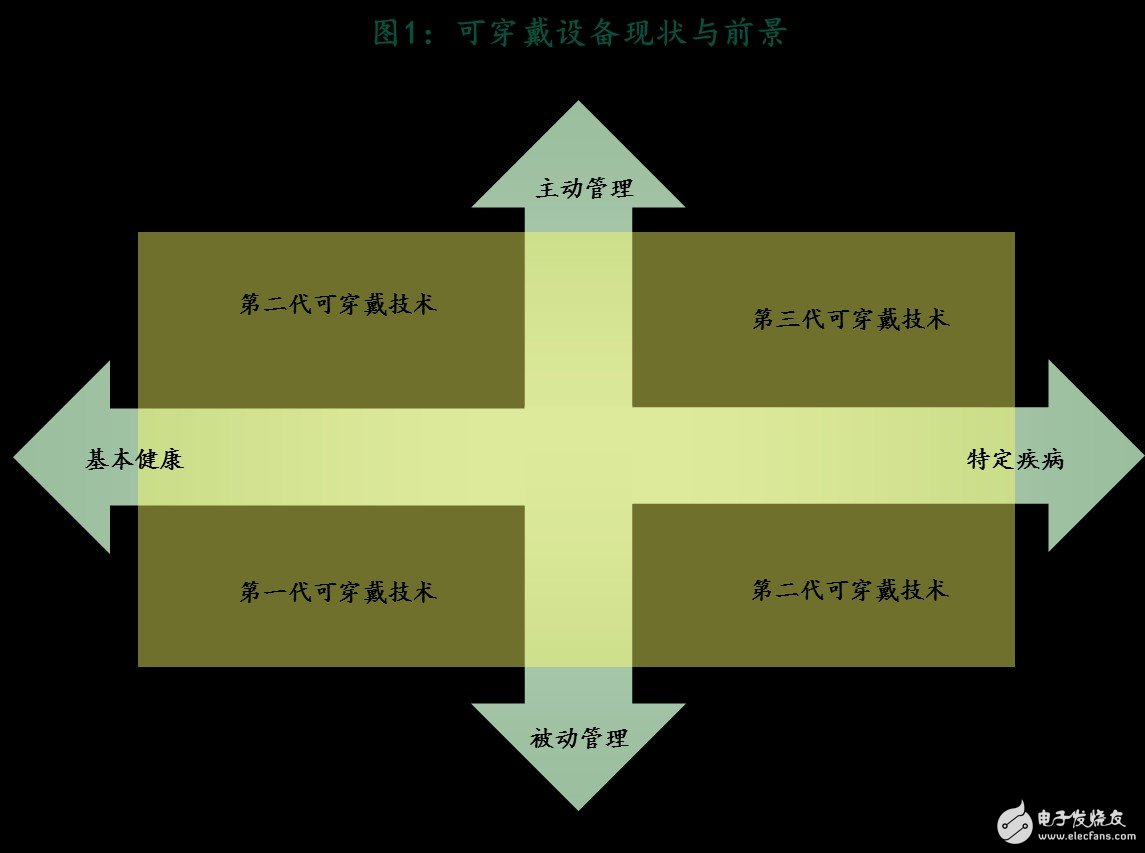
The third-generation motion tracker will be versatile, with the best features of consumer and medical technology devices. These next-generation devices will allow users to instantly monitor their health goals while sharing their vital data with their doctors to build a personal health management plan that is focused on prevention. Although the technology is not yet in place, we believe that these devices will have the following characteristics:
Personalization: A new generation of wearable devices will be able to measure both the user's vital signs and personalized recommendations to further improve health. The information provided by these devices must be not only accurate, but also enforceable to motivate users to continue to interact.
Real-time: User information generated by the device will be analyzed in real time and transmitted seamlessly to the doctor. The latter will integrate this information into a personal health management plan tailored to the patient.
Fashion and ergonomics: Not all consumers are willing to wear a fitness bracelet that doesn't fit their fashion style, especially if they need to dress up. Second-generation motion tracker products will surpass current fitness bracelets; they may be embedded in “smartwear†or designed as contact lenses to eliminate the challenges of fashion design
People want wearables to become more advanced, not just to monitor the number of steps or sleep patterns, but to be truly a tool to help patients manage their health. In the near future, as technology advances, these wearable devices are no longer just consumer products, but medical devices that are approved by the FDA to enter the doctor's prescription and can be reimbursed by the insurance company.
The future of wearables
Today's wearable devices are relatively simple, but we believe that future devices will be far more complex than today, and bring more and more direct marketing opportunities. These devices will collect and analyze the user's growing medical and health data and integrate the location data of the smartphone – all of which will give companies new opportunities to interact directly with active consumers. Will users who wear a health bracelet choose to subscribe to services that provide nutrition and fitness advice? The Triathlon Athletes will not only receive the diet plan during the training phase, but also receive a list of food items from local stores via SMS or subscribe to the food delivery service?
Market participants in the health and wellness industry chain, such as food retailers, nutrition sellers, health clubs, healthcare providers and medical device manufacturers, may find that their existing business models will evolve with the wearable device market. It is enhanced or subverted. Visionary corporate management will begin to think about how to explore market potential and find new connected business and service opportunities. How to think about these thorny issues? You can start with these points:
1. What does the wearable device mean for our company's business?
2. How do more people use wearable devices to influence how our business communicates with existing customers? How will it affect the expectations of future customers?
3. How do you use the data from these wearable devices to help us find the best customer groups more accurately? Or how to develop the products and services that these customers really want?
4. Do our companies need to upgrade their technology to take advantage of these new opportunities? What is the most sensible and cost-effective method if needed?
5. Will strategic cooperation or mergers and acquisitions help? If so, what target companies should be able to fill the gaps in the company's internal capabilities to adapt to the wearable device market? Is such a transaction necessary? How do you think about making the most informed decision?
As wearables attract more users and advances in technology make it more useful, the impact of wearables on improving people's health and life expectancy will be enormous, and may even slow the rise in medical costs. At the same time, as wearable devices continue to evolve, they will bring new ways of communicating with customers, and the smartest companies will want to be prepared before the upheaval.
Phlizon`s COB series Grow Light emits all the wavelengths of light which can be fully absorbed by the plants to create.
Best full Specturm designed to perfectly match large areas of indooor plants, especially for Medical Plant.
COB + Dual-chip,most efficient spectrum,high PPFD.Two cooling fans with double ball(import from Japan) and big aluminum heat sink to protect the grow lights from high temperature,good cooling,long lifespan.Photosynthesis and promote healthy growth budding and flowering.
1000w/2000w /3000w COB LED Grow Light, it will give you more options when your plants need different strength of illumination.
Grow Lights are a great choice for growers who are dealing with hot HPS lights and want to change to something that's going to run cooler. Although Led Grow Lights do produce heat,the smaller models might not bring up the temperature of your grow space.Even the more powerful models of LED Grow Lights that produce a lot of heat still have built-in cooling systems to help prevent the heat from beaming directly down onto your plants.
2000w Cob Led Grow Light Features
Indoor grow light
COB series, high power branded CREE COB with high Par value and deeper penetration
VEG/BLOOM and STRONGER switches for each grow stage.
Special spectrum for plant growing to increase the yield.
Building to Harvest: Beneficial for seeding to fruiting stage.
Good quality fans with low noise.
Easy to install by minute
Energy Saving, environmental friendly
3 Years Warranty
Compare Led Grow Light to traditional HPS/MH grow light
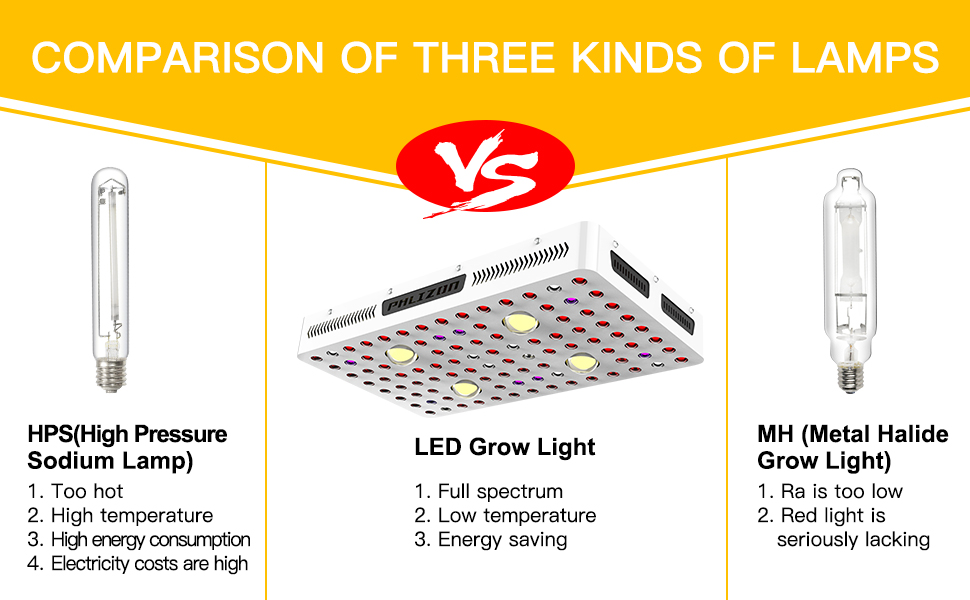
WHAT MAKE UP AN EXCELLENT LED GROW LIGHT ?
1.PPFD Value : PPFD is Photosynthetic Photon Flux Density. When you choose a plant light, you should compare the PPFD values of different plant lights. The larger the value, the better the growth of the plant.
2.Actual Power: Because the actual power of the plant light always varies with different conditions, all Amazon sellers use the rated power to describe the power of the product because the rated power is constant. When you pick a LED grow light, the rated power of the plant light is a reference, and more importantly is the actual power.
3.Core Coverage: In addition to the above two, when you choose a plant light, you also need to compare the cover area of different plant lights, of course, the size of the core coverage area. In general, in germination stage, you can hang the plant light higher and the cover area is larger. In flowering stage you can hang the plant light lower and the cover area is smaller because the plant needs more light at this stage. You have to compare different coverage areas to choose the plant light that suits you.

Detailed images of 2000w cob led grow light
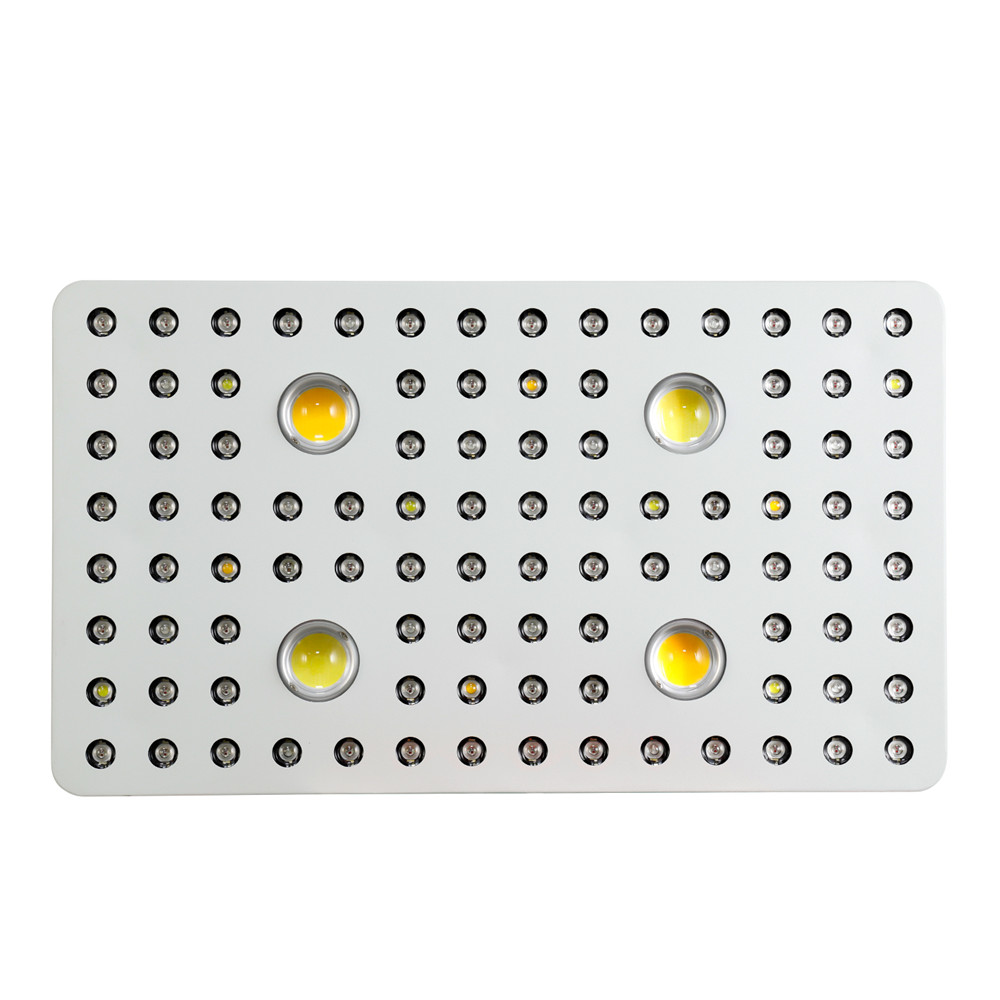
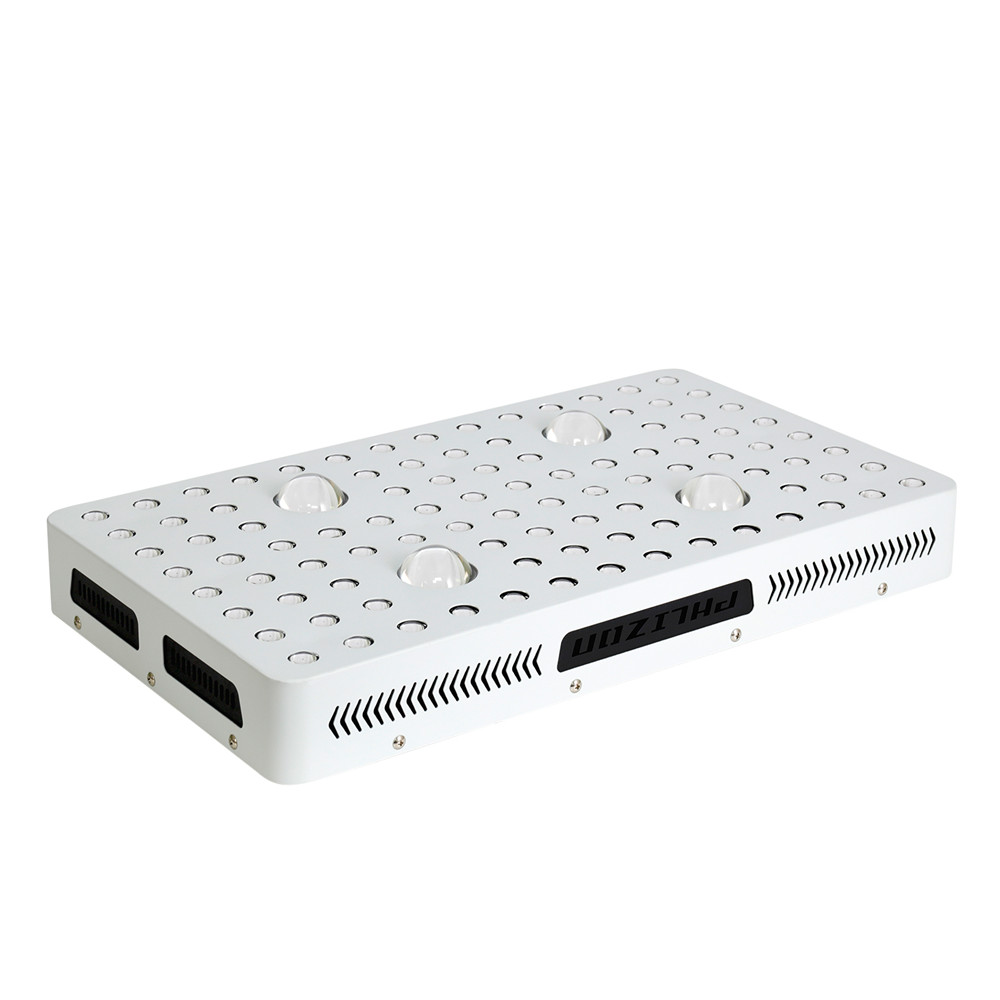
Applications
Hydroponics, Horticulture, Agriculture and Greenhouse
Locations: Farm, Exhibition, Garden, Home, Urban, Bonsai, and University Lab
Growth of Fruits, Vegetables, Flowers and so on
Seeding, Rooting, Breeding, Flowering and Fruiting period
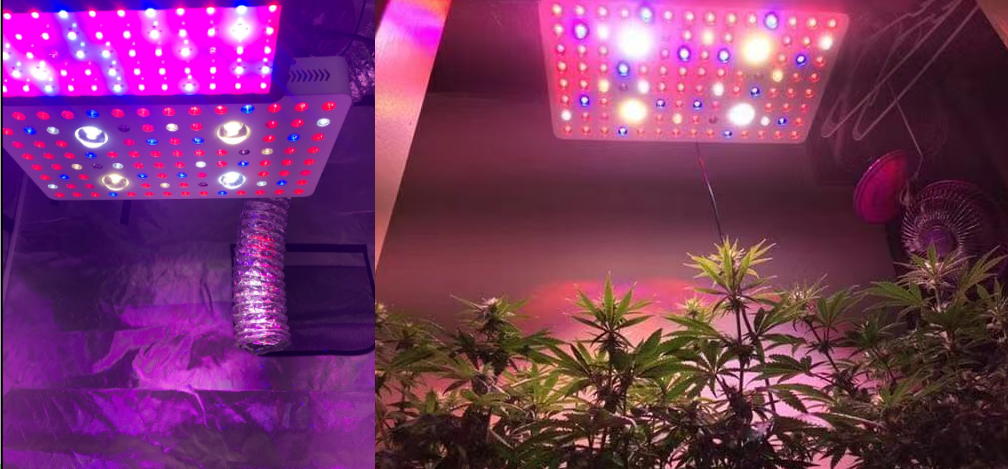
Packaging and Shipping
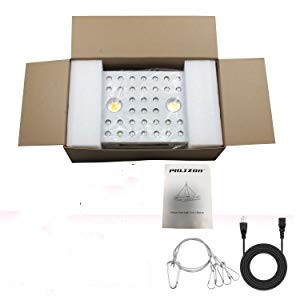
2. By Air or by Sea for batch goods, for FCL; Airport/ Port receiving;
3. Customers specifying freight forwarders or negotiable shipping methods!
4. Delivery Time: stock avaiable sample will be delivered immediately ; 3-7 days for trial order; 7- 25 days for batch goods
Suggestions:
1.Clean the dust inside every 6 months to ensure the good heat dissipation and long life time.
2.Don`t keep too short distance to the plant canopy to avert leaves bleaching.
3. Highly hang the lamp will weaken the energy and affect the growth cycle of the plants, so the lamp should not be hang too high.
4. While taking care of the plants, please spray the leaves and branches 2-3 times everyday, to ensure the plants do not wrinkle a wither, and have no phenomenon of few fruit, and hard pericarp
Trade Terms
Payment: T/T, L/C, Paypal, 30% deposits before production, 70% balance to be paid before deliverying(Western Union are welcome)
Sample will be delivered within 7 working days.
Discounts are offered based on order quanlityes.
MOQ:sample order are acceptable
Delivery ways:DHL,UPS,FedEx,TNT, door to door,by sea,by air,etc.
If you are interested in, and
1.own several store for agriculture in your local market
2.or in the business of grow light equipment
3.or good relationship with grower or greenhouse owner
To be a distributor, max support will be offered:
1.price support
2.technical support
3.new product support
4.24 hours after-sales service online
PH-B-L4
2000W Led Grow Light,Optic Cob Led Grow Lights,450W Cree Cob Grow Light,2000W Cob Led Lights
Shenzhen Phlizon Technology Co.,Ltd. , https://www.philizon.com